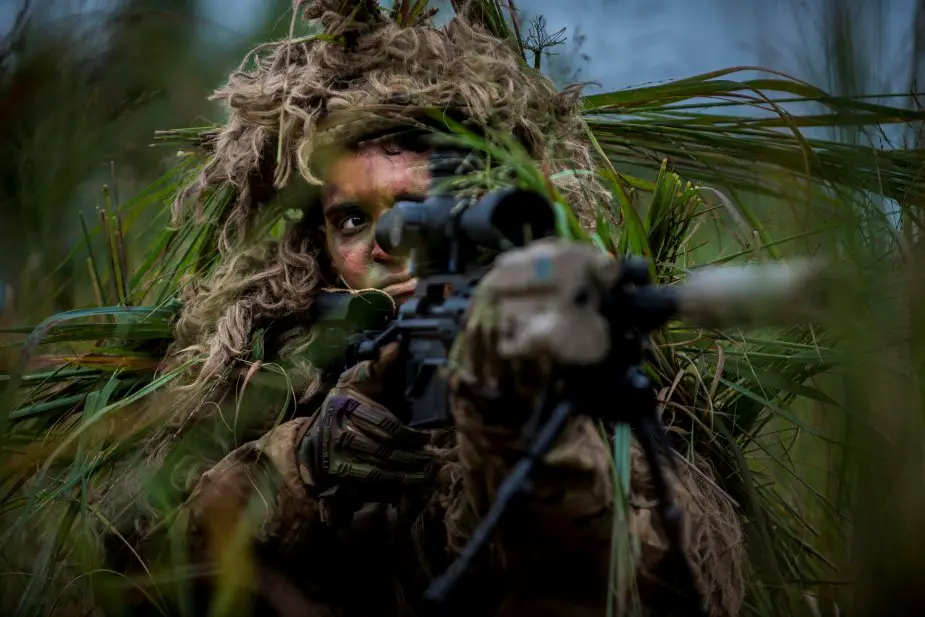Breaking news
U.S. snipers test Improved Ghillie Suit.
Sniper-qualified soldiers from across the U.S. Army gathered from Nov. 5 through Nov. 8 to conduct the visual testing portion of the bench-top evaluation for the Improved Ghillie System, or IGS., as reported by Debra Dawson on Army.mil.

U.S. Army sniper wearing the current Flame Resistant Ghillie System. The new Improved Ghillie System looks to enhance the snipers' lethality and survivability while being simpler and modular (Photo Credit: U.S. Army)
The visual testing is one of many crucial components required to roll out the IGS, as the Army aims to update its current Flame Resistant Ghillie System, which all snipers are currently provided, but rarely use operationally. Maj. WaiWah Ellison, assistant product manager, Durable Goods, Soldier Clothing and Individual Equipment with Program Executive Office Soldier, explained the need for the update: "The current kit is thick and heavy and comes with a lot of pieces that aren't used. "Soldiers are creating ghillie suits with their own materials to match their personal preference. We want to make the IGS simpler and modular so the snipers will use what is issued to them instead of relying on outside resources," Ellison said.
A number of new ghillie suits were tested by the snipers, and Sgt. Bryce Fox, a sniper team leader with 2nd Battalion, 505th Infantry Regiment, explained how the improved suit is necessary in an evolving combat climate. "The battlefield has changed, and our enemies possess the capabilities that allow them to better spot our snipers. It's time for an update to the current system, and I am happy to be a part of the testing," he added.
Snipers from Special Forces, Ranger regiments and conventional forces provided their technical expertise to test the camouflage's effectiveness. As part of the exercise, some snipers wore the proposed IGS models to conceal themselves in woodland and desert environments while the other snipers worked to locate the hidden snipers from distances as far as 200 meters and as close as 10 meters.
Staff Sgt. Ricky Labistre, another tester and sniper section team leader with 1st Battalion, 160th Infantry Regiment of the California National Guard, said the ghillie suit is one of the most important pieces in a snipers arsenal. "Ghillie suits provide snipers that edge and flexibility to maintain a concealed position, which is partial to our trade," he said. "A sniper's mission dictates that he remains concealed in order to be successful. Anytime we can improve our survivability, it is very welcomed."
Bringing snipers together with various backgrounds from throughout the Army is a big plus. "There are so many different ways to do the job. Everyone's background and training is essential in situations like this. This collaboration with our peers makes everyone better and more knowledgeable at our craft."
If the systems tested meet the key performance parameters set in the requirements, they will then move into the limited user evaluation phase, or LUE, as Ellison explained. "Whichever system passes this bench-top testing, the Army will purchase a limited amount and send them to units to use for training and even operational purposes overseas. The units that receive these will provide feedback through surveys and other methods that provide quantifiable data that helps us choose the user's preference."

























